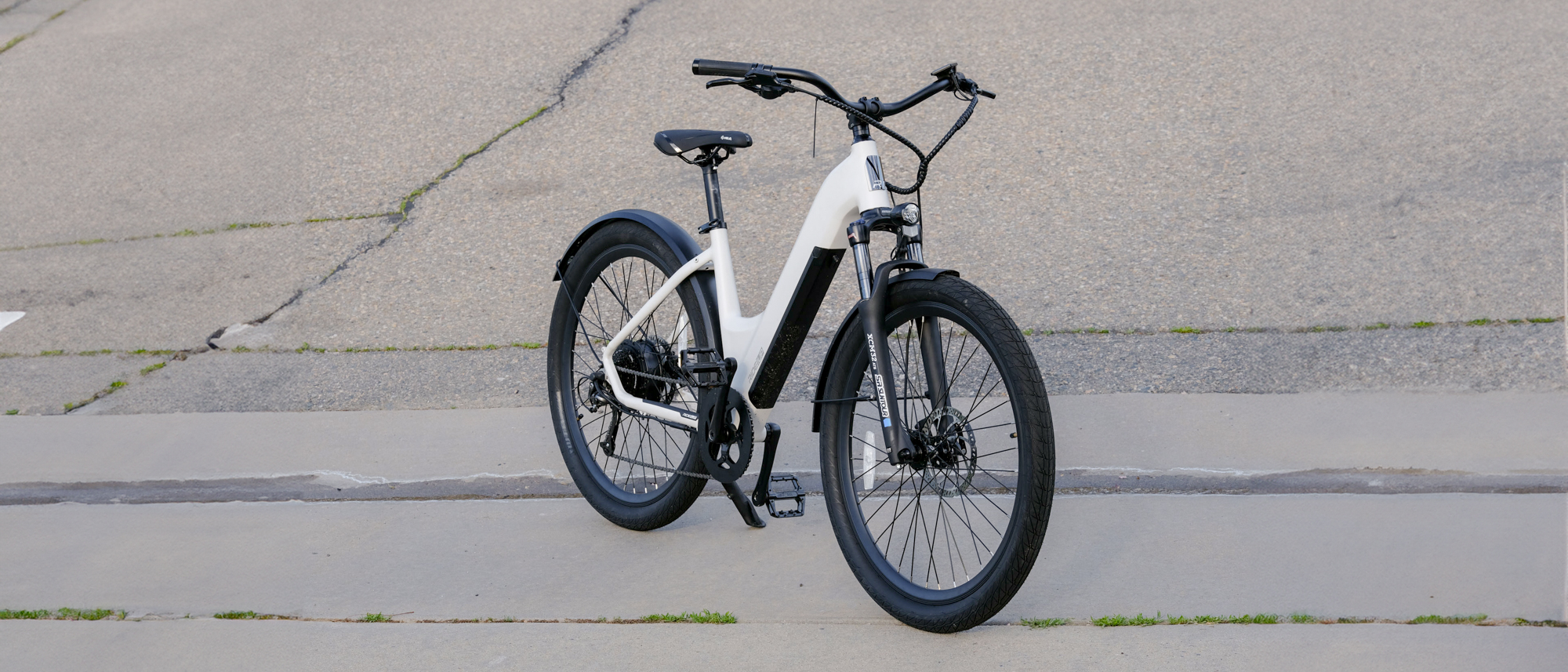Tom's Guide Verdict
The LMT’d V2’s upright riding position makes it ideal for riders who place a premium on comfort, yet the motor offers heaps of power to commute longer distances.
Pros
- +
Comfortable, upright riding position
- +
Powerful motor, especially in the highest assist setting
Cons
- -
The ride is a bit bouncy
Why you can trust Tom's Guide
Weight: 55 pounds
Motor: AKM 48V, 750 watt hub-based motor, 95Nm torque
Battery: 48V, 14Ah Reention Prism LG Cells
Maximum assist speed: 28mph (20mph throttle)
Maximum range: 50 miles
Drivetrain: Shimano 8-speed
Suspension: Suntour suspension fork, 100mm travel
Ride1Up’s goal when developing the LMT’d V2 ebike was to create a comfortable, simple ride that also improved the pedaling experience. To that end, the LMT’d V2 features a torque sensor, which adjusts the pedaling assist level based on your pedaling input.
It kicks in when you need it, adjusts up or down smoothly based on your pedaling, and makes for an overall pleasant ride feel. That’s the marquee feature, but the LMT’d V2 is worthy of your hard-earned dollars with its comfortable, upright riding position and no-nonsense build and design.
It’s simple, easy to use, and powerful enough to get you to and from work with no headaches. But how does it stack up against the best electric bikes available right now? We put it to the test to find out.
Ride1Up LMT’d V2 review: price and availability
The LMT’d V2 is available for purchase now through Ride1Up’s website. As of this writing, the bike is on sale for $1,495, which is $100 off its normal price. At checkout, you can choose to pay in full, or finance through Affirm.
Ride1Up offers a 1-year warranty, a 30-day return period should you not like the bike, and free shipping.
Ride1Up LMT’d V2 review: design
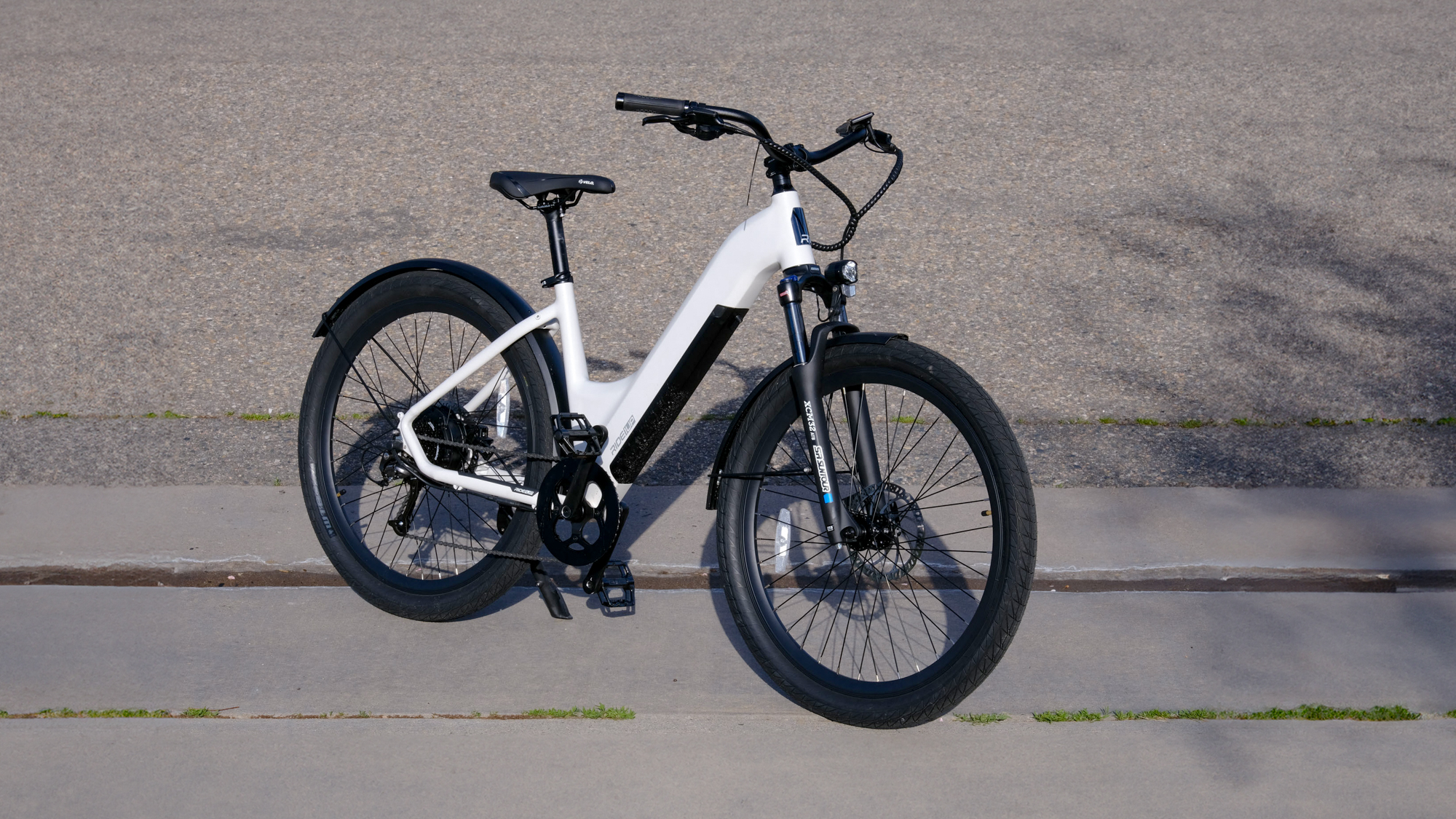
The LMT’d V2 comes in two frame options: XR (step-over) or ST (step-through). There is no price difference between the two options.
Aside from the frame differences, the builds are identical between the two options. The LMT’d V2 features a Suntour 32 suspension fork with 100mm of travel up front to absorb bumps and chatter. And Tektro provides hydraulic brakes for plenty of stopping power in all conditions.
The 48V Reention Prism LG battery tucks into the down tube of the frame to protect it from dirt, water, and other debris. It’s removable for easy charging and storage, though you can also charge the battery without removing it.
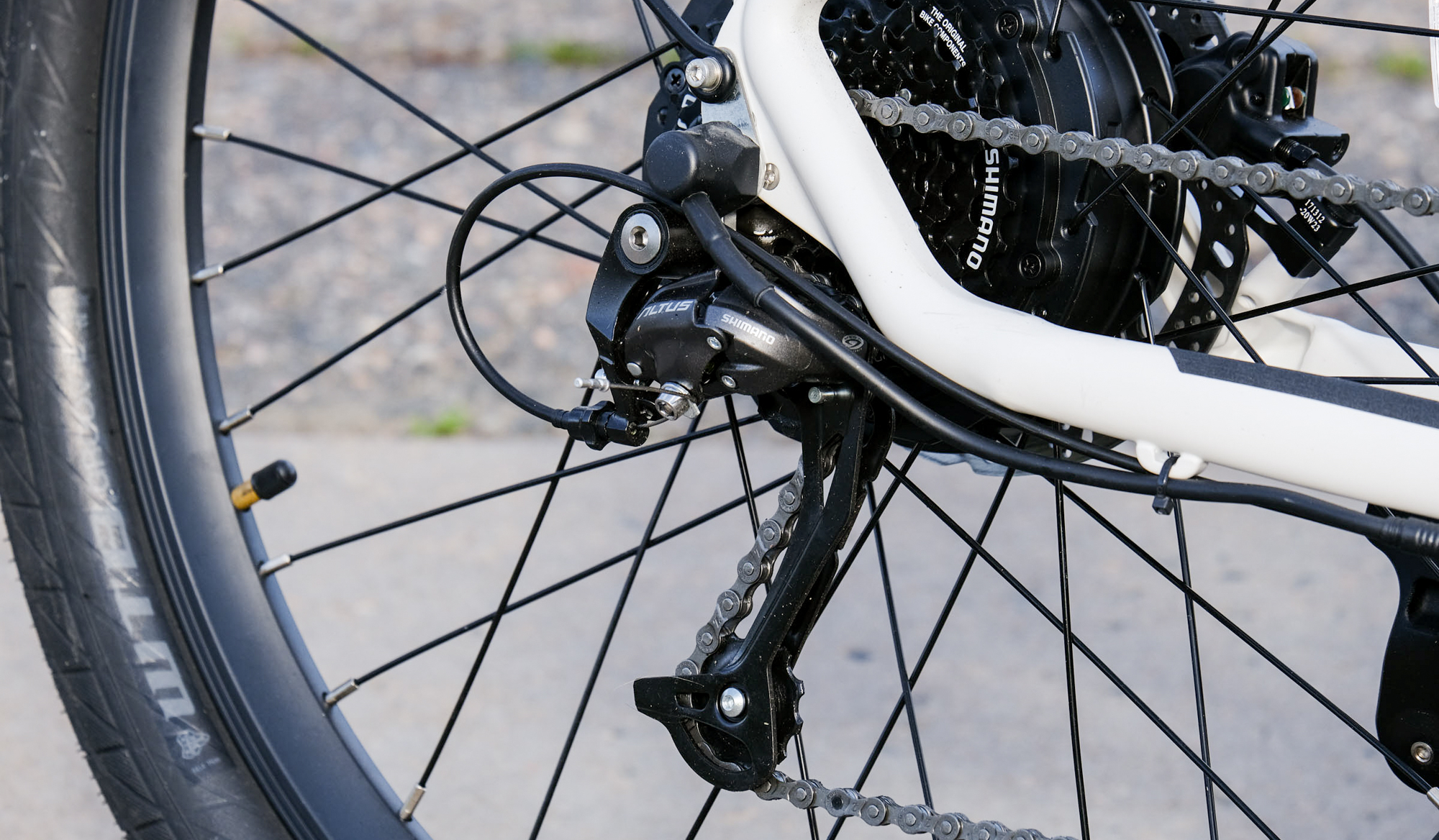
A Shimano 8-speed drivetrain gives you plenty of gears to pedal with or without the motor assist turned on. That complements an AKM 48V, 750-watt rear hub-based motor with 95Nm torque.
Fenders front and rear keep the muck off while you’re riding. An LED display mounts to the handlebars to give you all the information you’ll need on your ride at a quick glance. And a throttle mounted on the handlebar allows you to use the motor assist without pedaling at all.
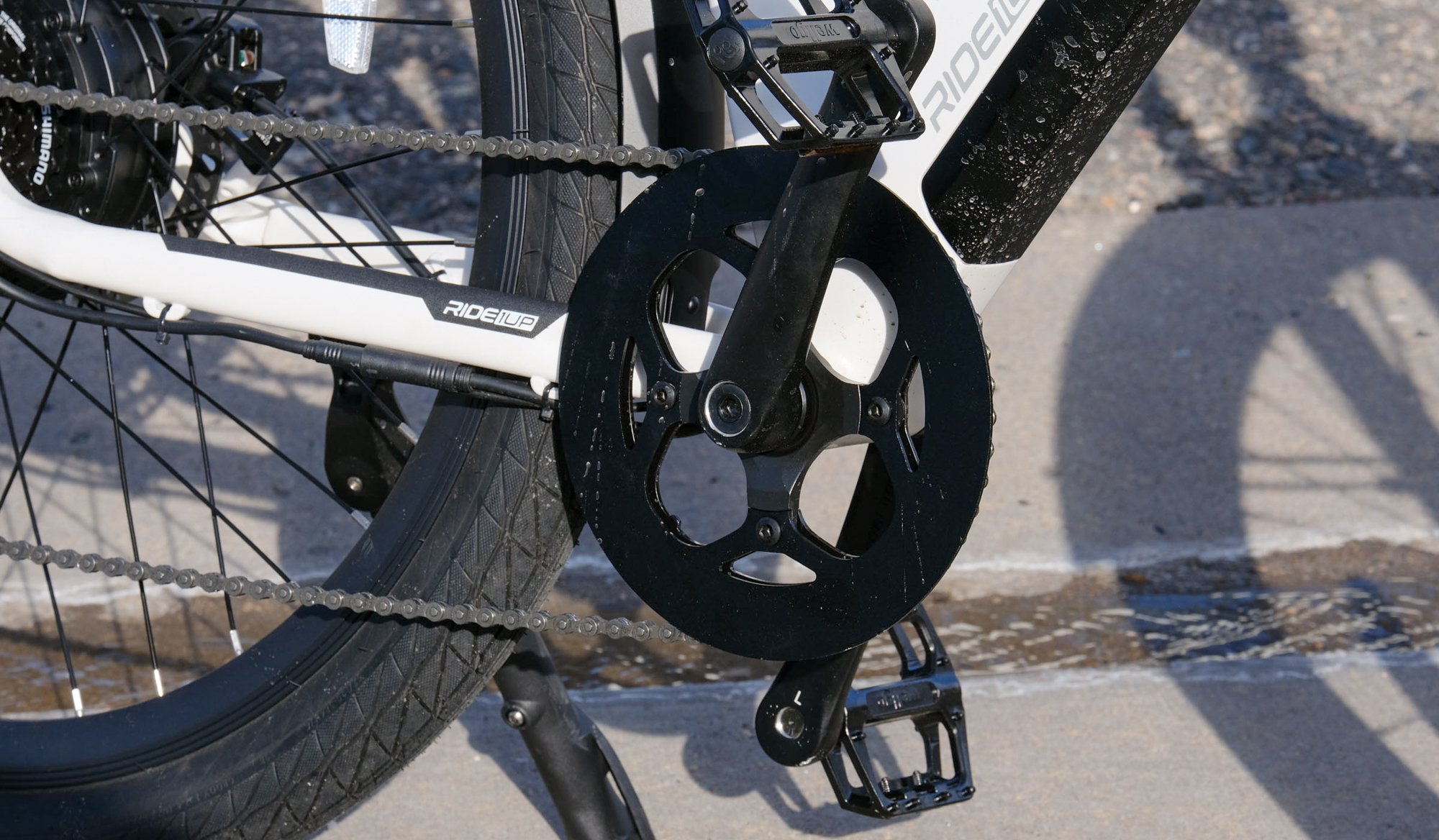
The torque sensor is mounted within the crankset assembly. It senses your pedaling input and adjusts assist power accordingly. However, out of the box, the LMT’d V2 did require more assembly than other ebikes I’ve tested recently.
The fork and the crank were both uninstalled and require a bit of know-how to get installed correctly. If that sounds intimidating, it’s best to take the LMT’d V2 to a bike shop to have it assembled by a professional.
Ride1Up LMT’d V2 review: performance
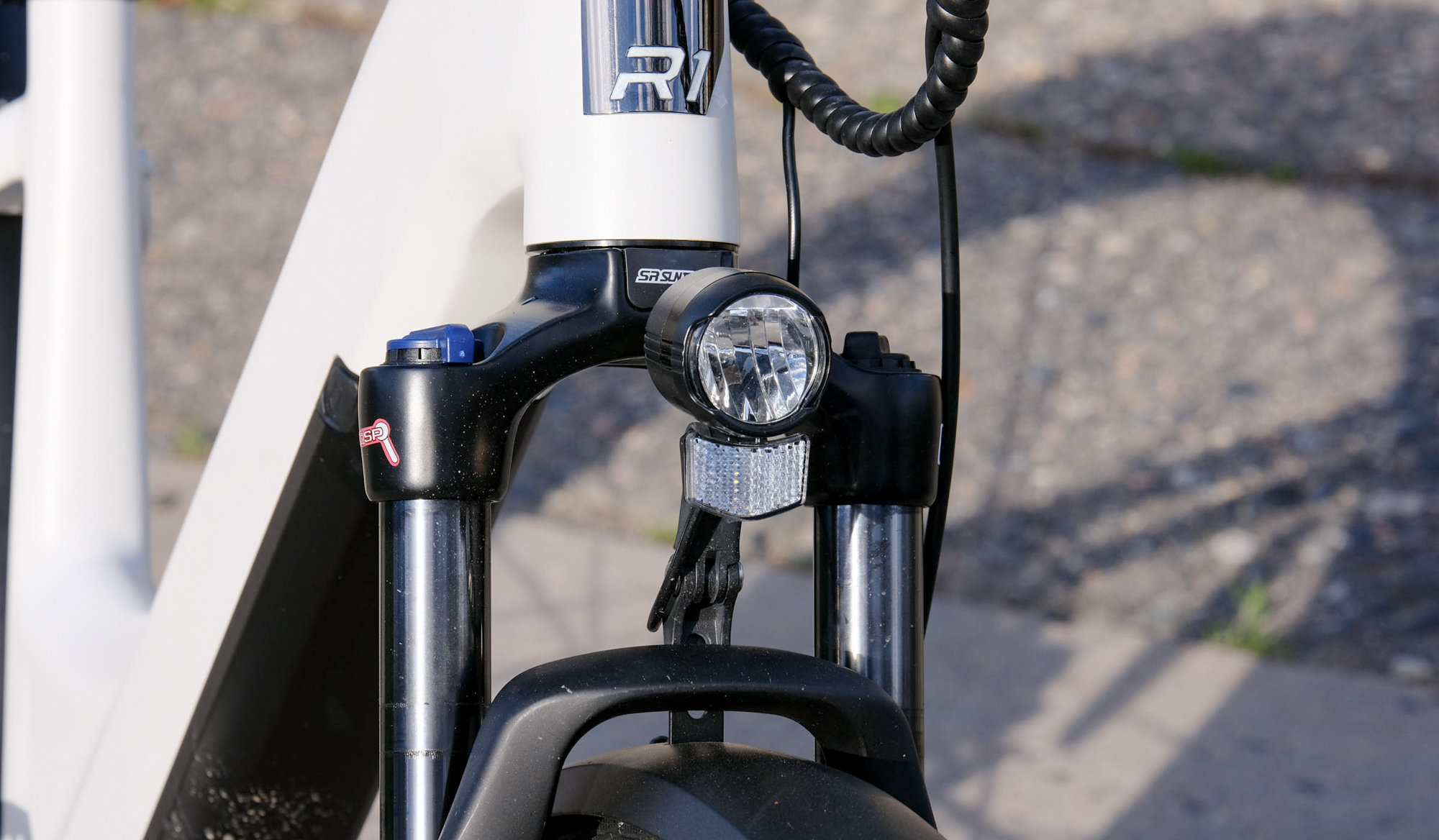
I took my first ride on the LMT’d V2 on my home roads here just outside of Denver, Colorado. They’re mostly rolling, with a few short hills thrown in for good measure. It was a pleasant spring day with temperatures in the high 60s, which is ideal for battery performance.
The ride quality feels very smooth, though the rear end does tend to bounce quite a bit. That’s probably because the overall design of the LMT’d V2 keeps your body upright and your weight back. So when you encounter an impact, your body weight bounces into the frame, which flexes accordingly. It’s not exactly bothersome, but it is noticeable.
Up front, the Suntour fork scrubs off chatter and small hits extremely well. On bigger hits, it feels less impressive. It’s a heavy fork, and while it does add some compliance to the front of the bike, the wide tires set at a low tire pressure would probably accomplish the same thing. The LMT’d V2 would probably be just as good without it.
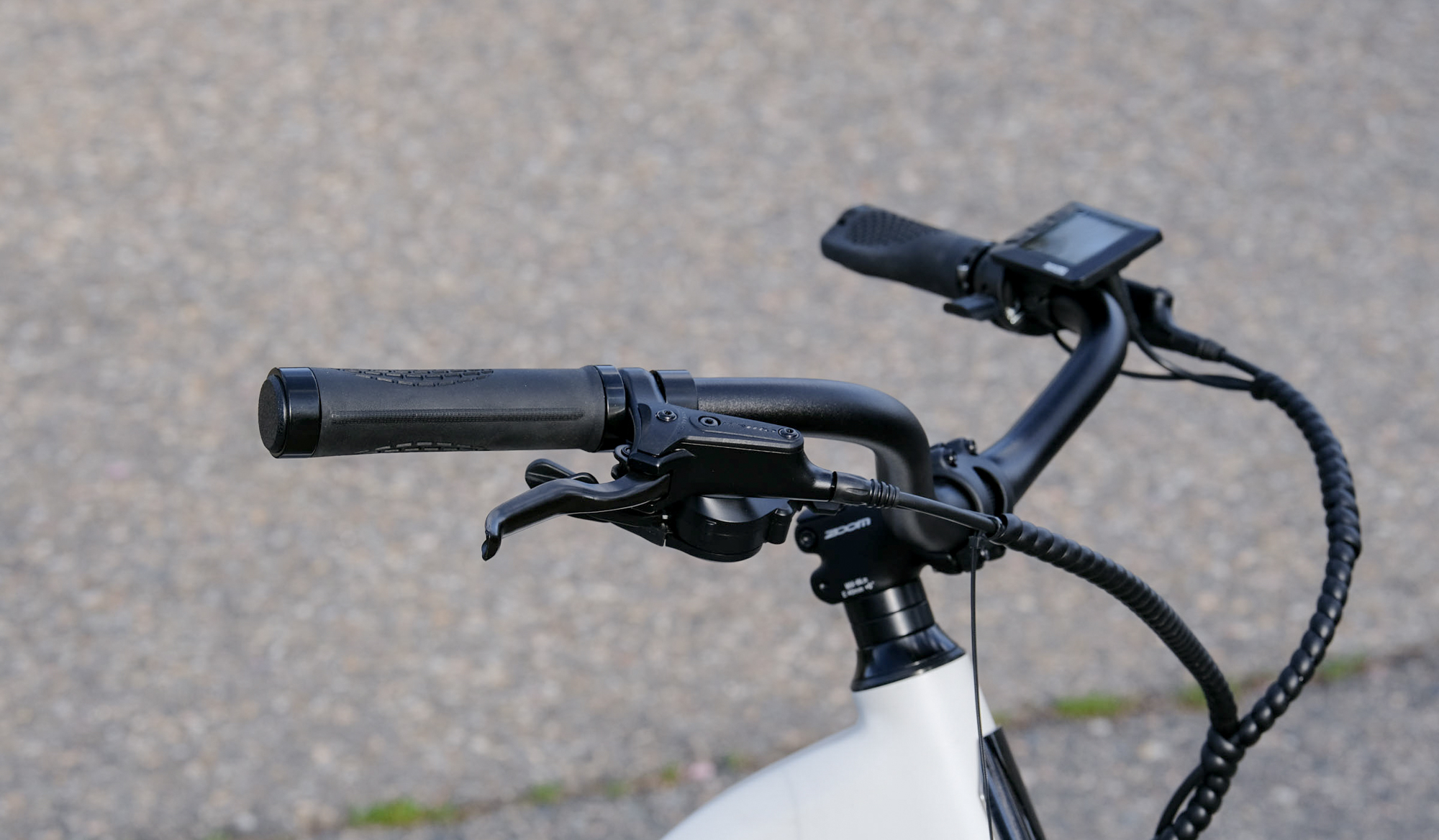
The riding position is decidedly upright. The handlebars sweep back toward the rider, another nod to comfort. The LMT’d V2 feels a bit like a cruiser in that sense, though it is much more fun to ride, more responsive, more powerful, and ultimately more useful than a traditional beach cruiser.
The back sweep of the handlebars wasn't quite right for me, though. While they accomplish the primary goal of keeping the rider upright, they also put your wrists at a slightly unnatural angle when you’re holding the grips. I would have preferred a straighter bar with just a small amount of back sweep for more control and comfort.
On my first ride, I spent most of the time in the highest assist setting. There are five settings, five being the highest. I did find that going from the fourth assist setting to the fifth is a big jump in power, while modes one through four are subtler changes.
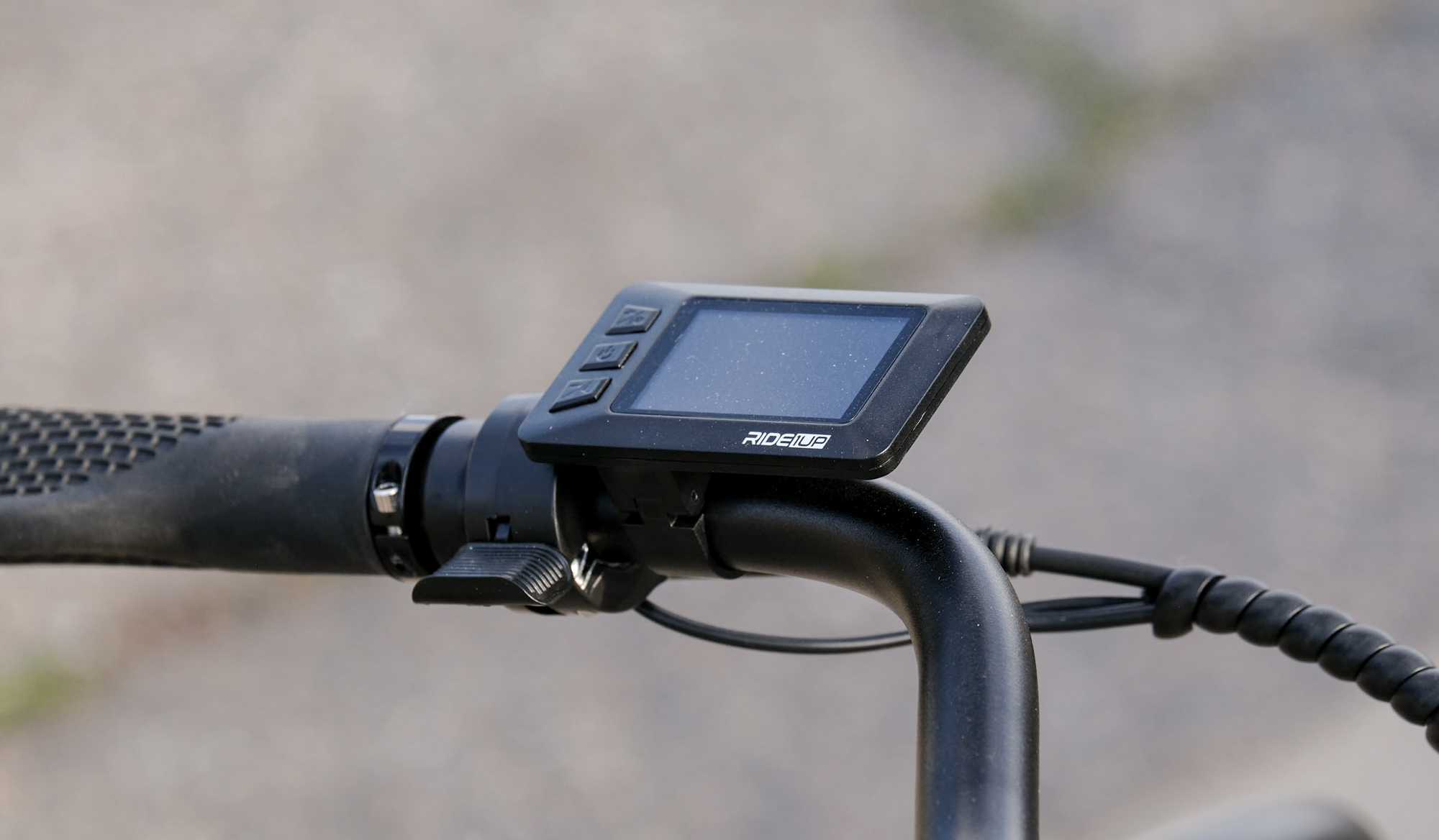
In all assist settings, there was a bit of lag between pedaling input and assist kicking in, and then disengaging after I stopped pedaling. It’s not much, but enough to notice. You’ll get used to it quickly, but it is something you’ll need to consider when you’re approaching stop signs, or starting from a dead stop on a hill.
Speaking of starting from a dead stop on a hill, the LMT’d V2 did that very well in the highest assist setting. Shifting into the middle or easy gears on the Shimano drivetrain will improve this process.
In the lower assist settings, you’ll need to shift the gears into the easiest gears to get going. The throttle is extremely useful in this situation. The highest assist setting also felt smoother and more natural in its assist implementation than the lower assist levels.
That said, that high level also gets you up to speed super quickly, so you’ll reach the bike’s maximum assist speed very quickly. If you want to feel your pedaling input more or get a workout, use the first four-assist settings instead.
Ride1Up LMT’d V2 review: battery life
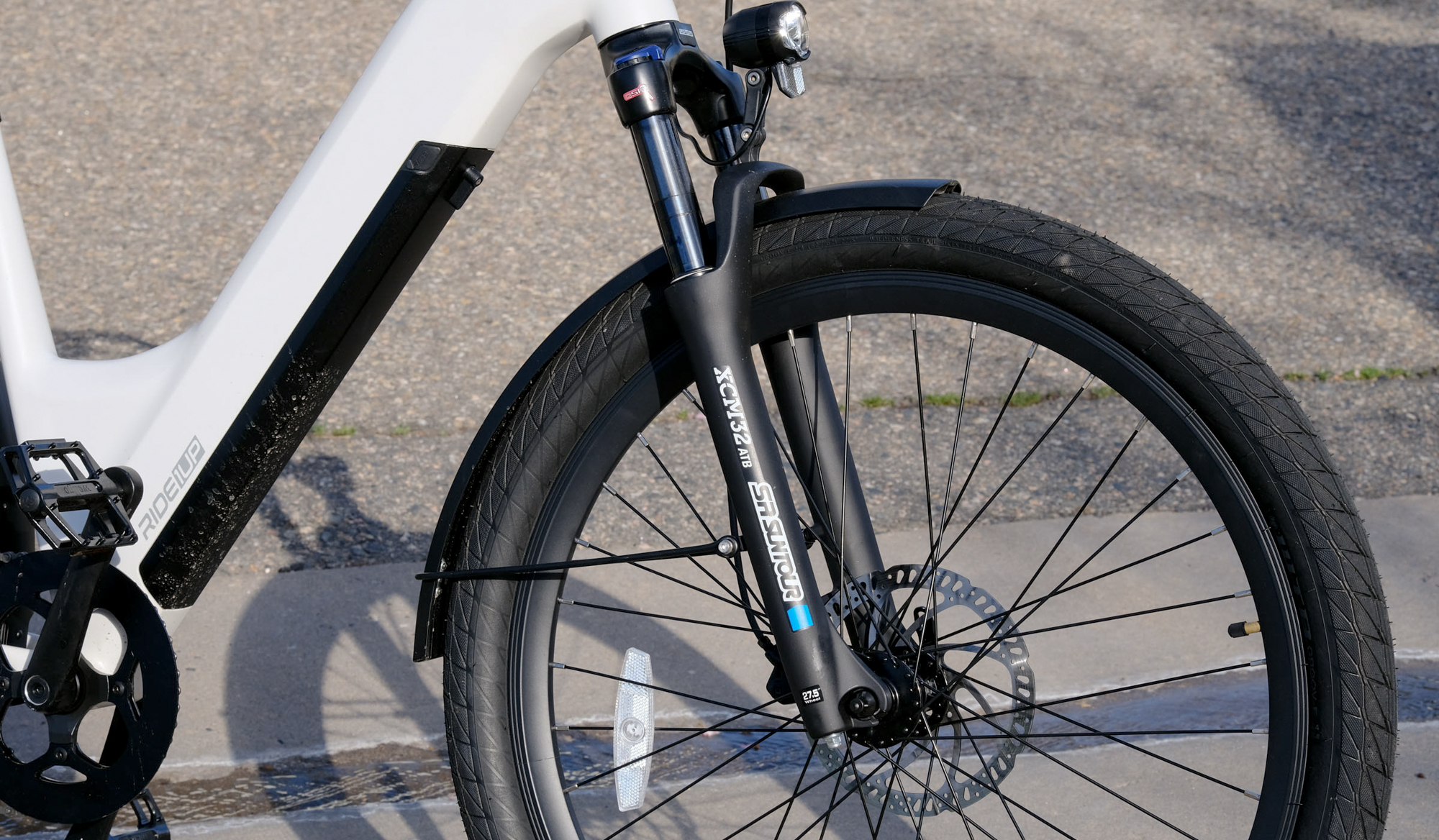
After ten miles on my first ride, using the highest assist setting and the throttle heavily, I used about 20% of the battery from a fresh charge. Given those numbers, it’s certainly possible to reach the advertised 50-mile range.
Charging the battery is easy, and you don’t have to remove it to get it charged up. Simply plug the charger into the charging port on the down tube.
If you want to remove the battery for charging or storage, just use the included keys to unlock it, then turn the lever on the bottom of the down tube to pop it out.
Ride1Up LMT’d V2 review: accessories
Ride1Up offers a ton of accessories for its bikes, and some of them work perfectly with the LMT’d V2. Ride1Up lists the following as some of the best choices for the LMT’d:
- Connect+ basket (rear) $60
- Connect+Front rack $55
- Phone Mount $24
- Connect+Rear Rack $50
- Ride1Up Panniers $60
Should you buy the Ride1Up LMT’d V2?
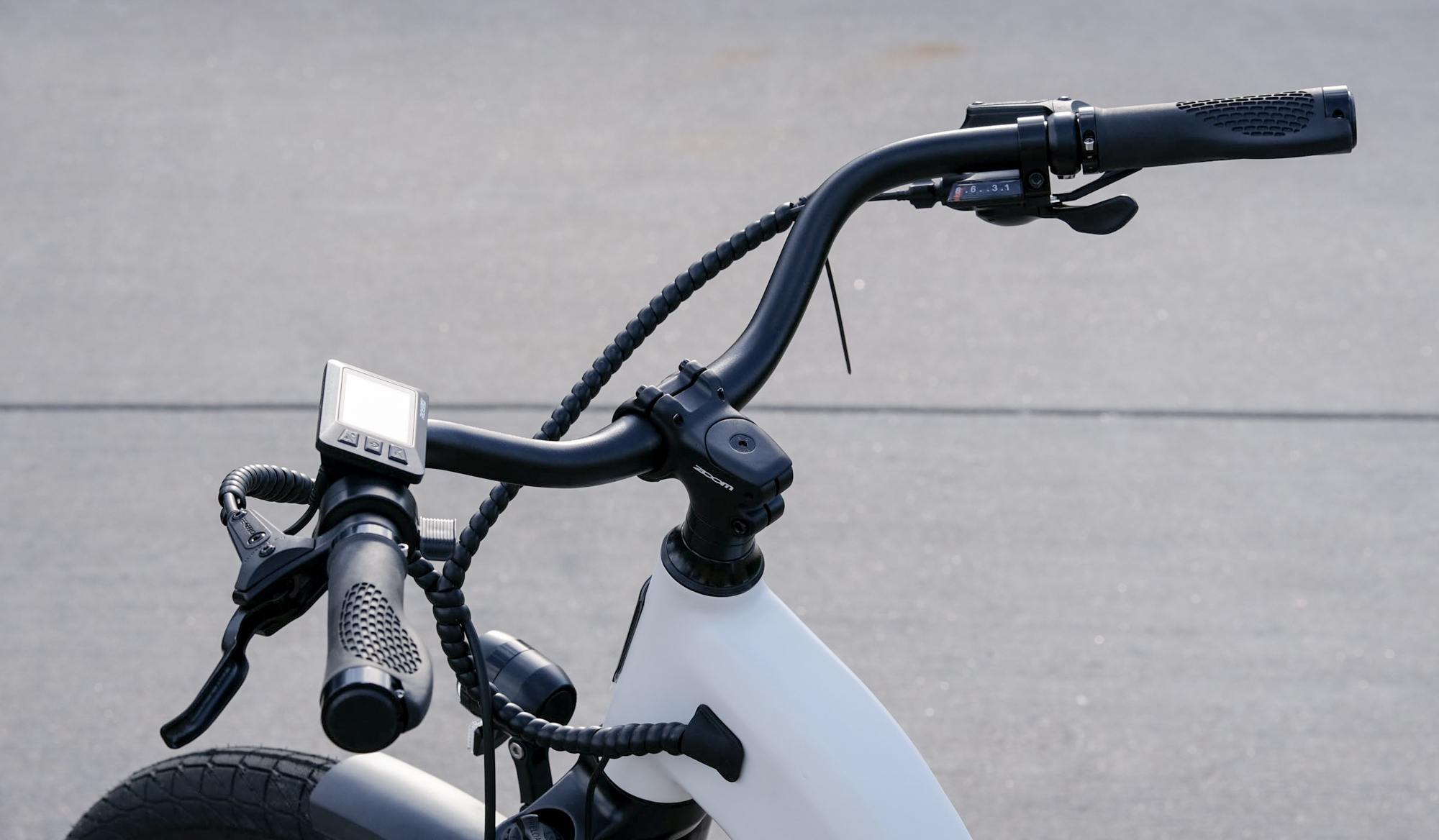
The LMT’d V2 is ideal for commuters looking for a comfortable, upright riding position and a simple, no-nonsense build that focuses on the ride, not the gear. While the suspension fork feels excessive, the rest of the build feels well thought out and durable for years of riding.
The torque sensor improves the ride feel, and the pedal assist from the motor packs quite a punch for riders who live in hilly areas. It’s a great choice for riders with limited flexibility who value comfort and power above all else.
However, the LMT’d V2 sits in a pretty crowded category of ebikes under $2,000 with an upright riding position and a step-through frame option.
A few notable competitors include the RadPower RadCity 5 Plus ($1,699), NIU BQi-C3 Pro ($2,199), and the Propella 9S Pro V2 (1,399).
The LMT’d V2 stacks up nicely against all three, besting all three in the comfort department. For a competitive price, however, the NIU features two batteries for a much longer range, as well as a belt drive system that reduces maintenance.
Dan Cavallari is the former technical editor for VeloNews Magazine, who currently reviews electric bikes, bike lights, and other bike accessories for Tom's Guide. In addition to VeloNews, his work has appeared in Triathlete Magazine, Rouleur Magazine, CyclingTips.com, Road Bike Action, Mountain Bike Action, CycleVolta.com, Tomsguide.com, and much more. Dan also hosts two podcasts on his site, Slow Guy on the Fast Ride: One is about cycling and other outdoor activities, while the other looks at mental health issues. Most recently, Dan also covered the 2022 Tour de France. Dan lives outside of Denver, Colorado with his family.
